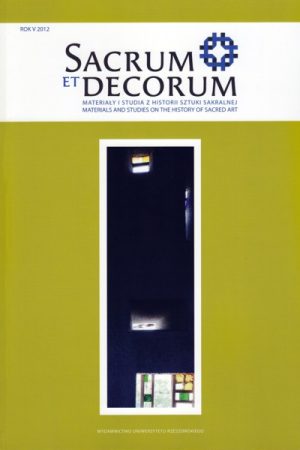Działalność Franciszka Białkowskiego i Władysława Skibińskiego. Przyczynek do badań nad działalnością warszawskich pracowni witrażowniczych
Słowa kluczowe:
Franciszek Białkowski, Władysław Skibiński , Warszawa, Polska, XX wiek , witrażAbstrakt
W 1902 roku w Warszawie rozpoczęła działalność pracownia witraży założona przez Franciszka Białkowskiego i Władysława Skibińskiego. Ich współpraca zakończyła się szybko, bowiem już w 1905 roku obaj prowadzili niezależne firmy, w których powstawały witraże przeznaczone głównie do kościołów rzymsko-katolickich na obszarze Królestwa Polskiego. W „Pracowni witraży artystycznych Białkowski i s-ka”, nagradzanej na wystawach krajowych i zagranicznych, realizowane były witraże – figuralne i dekoracyjne – projektowane przez samego właściciela oraz innych artystów, między innymi Jana Kantego Gumowskiego (Żyrardów), Konrada Krzyżanowskiego (Brześć Kujawski, Limanowa), Eligiusza Niewiadomskiego (Konin), Jana Henryka Rosena (Lwów, katedra ormiańska i kościół św. Marii Magdaleny), Edwarda Trojanowskiego (Lubraniec). Pracownia została zamknięta prawdopodobnie około 1930 roku. Z dorobku drugiej pracowni omówionej w artykule – „Zakładu artystycznego wykonywania witraży W. Skibiński” – znane jest zaledwie kilka zespołów witraży sakralnych (katedra w Kaliszu, Czarnia, Opatówek, Mełgiew, Czarnożyły, Ciechocinek). Przynajmniej niektóre z nich (w korpusie kaliskiego kościoła) projektował sam Skibiński, natomiast jedynym (dotąd) znanym artystą z nim współpracującym jest Włodzimierz Tetmajer (kaliska kaplica Pod Orłami). Około 1921 roku Zakład zakończył działalność, a znajdujące się w nim szkło kupiła właścicielka Krakowskiego Zakładu Witrażów S. G. Żeleński, później niejednokrotnie korzystająca z pomocy Skibińskiego jako doświadczonego witrażysty. Celem niniejszego artykułu, poza prezentacją wstępnych ustaleń dotyczących obu pracowni, jest zainspirowanie do dalszych badań nad mało rozpoznanym zagadnieniem witrażownictwa warszawskiego w I połowie wieku XX.
Downloads
Pobrania
Opublikowane
Jak cytować
Numer
Dział
Licencja
Prawa autorskie (c) 2012 Sacrum et Decorum

Utwór dostępny jest na licencji Creative Commons Uznanie autorstwa – Użycie niekomercyjne – Bez utworów zależnych 4.0 Międzynarodowe.
Zgodnie z polityką Open Access autorzy zachowują pełnię praw autorskich do swoich artykułów – bez ograniczeń.
Autorzy mogą deponować swoje artykuły w wybranym przez siebie repozytorium.


